.
.
My dad…Joseph Maita, Sr.
1917-2000
This photo would have likely been taken in the late 1950’s/early 1960’s
.
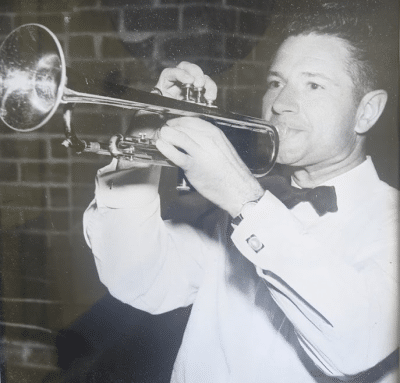
..
.
___
.
.
“Good fathers not only tell us how to live, they show us.”
-Mark Twain
.
As we get older, memories become more precious, and we hold them closer to us. And memories of my dad are washing over me like a golden sunrise today, Father’s Day. His encouraging voice and the sound of his trumpet fill my ears as if it were yesterday.
Thus I feel compelled to honor him, and share him with interested readers on this day.
This post originally appeared on Father’s Day, 2021 as “True Jazz Stories: Musical Adventures of Joe Maita, Sr.”
.
.
___
.
.

Joseph Maita, Sr.
c. 1935
.
___
.
…..My father Joseph Maita (Sr.) was affable, charismatic, and loving – gifted as a musician and, ultimately, a successful business owner. He was also extraordinarily complex and challenged by having to make choices so many young parents find themselves confronting – following their creative impulses and desires or, “for the good of the family,” sacrificing dreams for a “steady job.”
…..Although he was often first-call for casual music jobs in the San Francisco Bay area until his passing at age 83 in 2000 (he played trumpet and viola), by the time I was born in 1954, my dad had mostly abandoned his dream of becoming a full-time musician for the more reliable financial rewards as an Oakland restauranteur and, eventually, a frozen food manufacturer. (That being a restauranteur provides a more secure future than a musician is a reminder of the economic perils creative artists face).
…..Our family knows the part of his life that we witnessed – his long hours tending bar and baking pizza and working in his food processing plant, but other than an occasional story over the dinner table, his days as an aspiring musician were not readily shared (or appreciated) and were mostly a mysterious part of his biography.
…..In an effort to remedy this (and to provide him with a “retirement project”), toward the end of his life my father sat at a computer that would often confound him and wrote stories about his days as a young musician. When I would visit him and my mom in the late 1990’s, he often eagerly shared these pieces with me – the formation of youth orchestras and the enduring friendships with fellow bandmembers, the excitement of the emerging big band era and finding a place in it, the “starvation” road tours, the encounters with Roy Eldridge and Judy Garland, and his experience blowing taps for young soldiers from a hilltop at Camp Young during World War II.
…..I assumed those stories were long gone, but during a recent spring-cleaning project that involved rummaging through boxes that have resided in the attic for longer than I care to admit, I came across a three-ring binder that neatly housed them, and after reading them for the first time in over 20 years, felt it was about time that his stories be shared.
…..I recognize that publishing them is a highly personal endeavor, but I am also confident that the enthusiastic voice of his experiences as a musician is a relevant contribution to the history of his era, and to the challenges and joys musicians continue to encounter.
…..My father was not a writer; he was a storyteller who had an intense desire to share his personal experiences as a young musician.
…..On this Father’s Day, it is my privilege, Dad, to publish your stories.
.
Joe Maita (Jr.)
Editor/Publisher
.
.
___
.
.
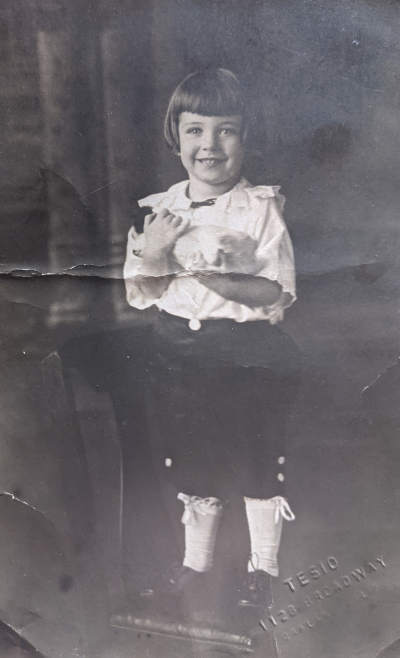
Joe Maita, c. 1920
.
My heritage
…..My name is Joseph F. Maita. I was born in Oakland, California on the morning of July 22, 1917 on 11th Street between Washington and Clay Streets.
…..I was named after my grandfather Guiseppe Maita. The following information of my Grandfather coming to America may not be 100% accurate. Grandfather, who was married to Francesca Nuccio, left Cefala Diana, Sicily in 1896 with his brother-in-law Louis Nuccio, Grandmother Francesca’s brother…We think grandfather landed in New Orleans. He worked at a variety of labor related jobs such as railroad, cement and plastering in Louisiana, Kansas and Chicago. He was in America for eight years before the rest of the family left Sicily to come to America to be reunited.
…..In 1904 Grandmother Francesca (Nuccio) Maita sold the family property in Cefala Diana and as a family shipped out from Naples to join Grandfather. The family members with grandmother to make the trip to America in 1904 were their sons, Basil, Michael, Peter, and their daughters, Carmela, Josephine, and Concettina. My father Basil was 16 years old at the time. The family was reunited together in Chicago. The youngest daughter Rose was born in Chicago in 1905.
…..In Chicago as a young boy my father worked bringing water to the laborers working on the railroad. When the family moved to San Francisco, as a young man had a chance to work at a factory in Pinole manufacturing explosives. As commuting was difficult between San Francisco and Pinole, Dad rented a room from the Mike Calderella family in Pinole. When my grandparents found out what kind of a dangerous job Dad had they made him move back to live with them and he found a job at the Pacific Foundry in S.F. It was this period of time that Basil met the Trentacoste family in Oakland and there was my mother to be, Vita Trentacoste, a 16-year-old beauty. They were married on July 2, 1916 in Oakland.
.
___
.

The Sacramento band Joe Maita played in after graduating high school, c. 1935. Maita is fourth from the left
.
1937
…..I had graduated from Sacramento High School a year ago and was very active with my music. I was playing in a great band that I had organized with Cliff Fishback. We started the band in 1935 as a club in order to get the best musicians Sacramento had to offer…As we picked the best players from several of the local bands that were already organized, the band leaders couldn’t object to what we were doing and thinking that we were (stealing) their best men. Actually the rehearsal band was innocent in its concept, however, after the band started to be the talk of the town, it took on its own popularity. All this started to happen because of the timing, musically speaking…The big band era was being born!
…..“Swing! Swing!” The word was born with the birth of the Dorsey Brothers, Benny Goodman, Count Basie, and many more great bands and the wonderful players that fueled the excitement of their solos that are still remembered to this day. How about the Bunny Berigan trumpet chorus on “I Can’t Get Started,” or Coleman Hawkins’ solo on “Body and Soul”? These men have been gone for a long time, but their solos live on.
…..The new sounds we were hearing came to us via the airways or radio which was becoming popular at this time, almost every home had one. We would tune in on the radio whenever we would see a band scheduled that we would like to hear. This was our exposure to the bands and gave us the opportunity to make musical choices. Of all the bands we could hear we really went for the Benny Goodman Orchestra. It was a beautiful sound of color arranging musically speaking, with tunes like “Sometimes I’m Happy,” “Blue Skies,” “Goodbye,” “King Porter Stomp,” and on and on. Fletcher Henderson was a fine arranger of music, especially at this time. The voicing of the sax section had a wonderful new sound that we went for and this probably influenced our direction in what kind of band we were going to copy or to try to sound like…Cliff Fishback, our musical arranger and one of my best friends ever, was going to make our first test arrangement using the same sax section; tenors and 2 E flat alto sax. We had our first rehearsal in our dining room of our home in Sacramento. We like the way the sax section sounded. The next thing to do was to add our brass and rhythm section.
…..For our trumpet section, the talented Roy Davis would be our 1st trumpet man, I was 2nd, and Lou Mitchell on 3rd. Lou would handle all the jazz. Lou’s brother Andy Mitchell on trombone. For the rhythm section we have Cliff Fishback on piano, Carl Modell on string bass, Jack Gillette on guitar and Link Bethel on drums (a la Gene Krupa!) The sax players were: Ed Litten, lead alto and clarinet, Hamilton Allen on alto and clarinet (and also playing excellent oboe, flute and tenor sax), Roger (Buff) Clifford and Ed Gorman. Ed did most of the jazz.
…..We started rehearsals using some stock arrangements and the specials by Cliff. I still remember the first tune he arranged that just became popular, “Lullaby of Broadway.” The excitement of hearing the band and all we contributed our personal touch to the sound was rewarding. At this stage our band was supposed to be a secret so that we could rehearse independent of our individual commitments to the bandleaders we were supposed to be playing with, but the word got around town that there was a great new swing band that was rehearsing secretly. One afternoon while rehearsing our band in my basement a young man came over to my house and stood out in the driveway to listen. He must have been pleased because the next day in the Sacramento Union newspaper our secret band was not a secret anymore. The writer was a young man by the name of Herb Caen.
…..We could hardly wait to make a first appearance with our band to show it off. We contacted Howard Hews to front us and get arrangements. Our first public appearance was the noon dance on Friday in the gym at Sacramento High School. The band sounded great and everyone crowded around to listen to this new swing band. From then on we were on our own.
…..We played many engagements in the Sacramento area including the Rainbow Gardens, a popular ballroom that booked all the famous bands of the time.
…..One day while we were rehearsing at Lou Mitchell’s garage where we built a great place to practice, a man drove up in a Packard sport sedan and wanted to talk to us. After 62 years I still remember his name; Charlie Taylor. He was a booker of bands and wanted to book us on a tour. He thought we had a fine band and could go places. We went along with his offer to book us on one-nighters and a possible steady engagement at the end. We would start with one night in Tony’s Ballroom in Reno and continuo on to do one-night stands in Idaho and Montana.
…..As we were ambitious and wanted to get out into the world with our band, we decided to make the tour. Our parents gave us a good luck party the night before we were to leave. They even gave us beautiful new luggage to have. The local newspapers, Sacramento Bee and Union and Herb Caen all had notices of our great chance to step out into the world. Out in the world were the following places of one night stands: Reno, Pocatello, Idaho Falls, Rexburg, St. Anthony, Gregson Hot Springs Resort, Bozeman, Billings, Dillon, and a town not even on the map, Gold Creek, Montana.
…..It is important to note at this time that our booker, Charlie Taylor, was traveling ahead of us booking the dates and calling us ahead where the next job would be. He would get an advance fee for himself for the date and we were supposed to get paid after we played the job. However, after we completed each job there was very little money left for us. He had taken most of it for himself. We had just enough money to pay for gas to get to the next town and job.
…..There are many experiences we had on this trip such as having enough money to buy food or pay for a room to sleep! We were traveling with two cars, each pulling a trailer with our luggage, music, sound system and instruments. We had to be creative at times to be able to eat, pay for a room and buy gas for the cars to get to the next town. We had to do a financial balancing act.
.
___
.
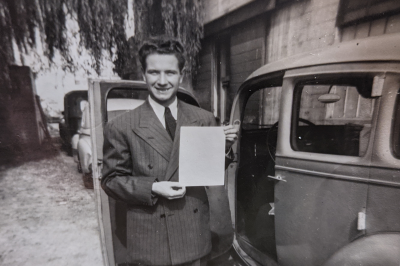
Joe Maita, c. 1938
.
Our “Successful” Starvation Tour
…..“Successful” because after a month of unexpected experiences we were able to return home safe and sound, although without financial reward, which is the same as saying “broke”!
…..After playing our first night at Tony’s Ballroom in Reno we started on the road caravan-style with our two cars pulling two trailers. There were six of us in each car. I remember how we joked about how to get to Idaho: someone said “Turn left at Wells.” We thought that was funny because to turn left we still had a long way to go, probably over 100 miles. We played Twin Falls, Pocatello and Idaho Falls. We played in a radio station in Idaho Falls, and I remember going up a narrow stairway to the second floor of the station to broadcast. So far we only had enough money to gas up the cars and go to the next town. The booker received the fee up front, but there wasn’t any left for us. Some of the dances we played for didn’t have any advance publicity and were poorly attended. Financially, we were coasting on what funds we had individually, which was very little.
…..The next job was going to be at a place called Packard’s Fun Barn. It was on a ranch near the town of St. Anthony, Idaho. We had enough money to rent two small rooms next to each other at a small motel. One of the rooms had a wood burning stove that I thought I could cook on. As our music job would start at night and we were tired from driving and hungry I decided to cook soup for all of us. We went into town and got some soup bones and vegetables at the market and went back to the motel and borrowed a big pot from the manager of the motel. I filled the pot with water, put the bones in the pot and started the fire. After a short while and the water hadn’t started to boil, Ham Allen said, “Hey, Joe, is the soup ready yet?” All the band members crowded into the little room looking at the pot of soup. I put all the vegetables in it and before you knew they were drawing off the “not ready” soup. I never heard a complaint.
…..Later that day we went over to the “Fun Barn,” which was on a ranch and as it was still daylight we could look over in the distance eastward and saw a beautiful range of mountains, the Grand Tetons. We unpacked all of our instruments and went into the barn were the dance was going to be. There was no bandstand to set up and especially no place for 12 musicians. We looked up and saw there was a hay loft area were six of us could play. We decided to take turns on playing on the small area, so six of us would play for a while and then the other six would play. It was a happy group of people in the audience, all dancing and enjoying themselves. After the dance was over Mrs. Packard brought some beautiful country fried chicken and home baked apple pie made from apples from her backyard and fed all of us. It was the best meal of the whole tour.
…..We were to go on to Bozeman, Montana next and it was late at night when we started on our way. It was a lonely road and started to tell ghost stories to try and keep awake. I think the name of the road was “Red Lodge Highway” near West Yellowstone. We thought we were so near the world famous “Old Faithful” and we would not be able to go see it.
…..We finally arrived in Bozeman for our next job. It was early A.M. and we had enough money to check into a hotel (not the Marriott!) but not enough to get a good meal. I remember once in Sacramento at the Rainbow Gardens Ballroom I found $4.75 in loose change under a sofa seat and treated our brass section to breakfast at Johnnie’s Waffle Shop. Maybe we could get lucky again her in Bozeman! We did check out sofas in the lobby of the hotel, but other than a dime or a penny, no luck.
…..I was in the hotel lobby when Lou Mitchell walked in with a big smile on his face. I said, “Lou, what are you smiling about? You look like you found a million dollars!” He said, “I went into a music store down the street and wound up giving some guy a guitar lesson. Let’s go across the street to the café and eat some food, I have money.” We played our dance job that night to a fairly good crowd. After the job we were paid what was left over from the booking fee. We never saw our agent as he booked jobs in advance of us. We had no way of getting in touch with him and just kept going from one job after another, hoping that the next one would pay more money than we were getting.
…..The next job would be at Gregson Hot Springs Resort about 16 miles west of Butte. I was excited because Butte is where my great uncle Vince lived and had his Truzzolino Tamale factory. He was well known for his tamales and with son John canned them and shipped them to their customers. When we arrived in Butte, all 12 of us in two cars parked outside Uncle Vince’s home and factory. I rang his doorbell and he was surprised to see me as I wasn’t expected. After I told him about the tour I was doing, he fixed me some eggs as he was having breakfast. He also served some black figs that he had just received from his sister, my Zia Vanna from Martinez, California. He gave me a case of Truzzolino canned tamales to give the band. We started off for our destination Gregson Hot Springs, and were just a few miles out of Butte when the band cried out, “Let’s get to the tamales!” We didn’t even have a can opener, but somehow we opened them and all had a delicious cold tamale lunch. When we arrived at the Springs we were told that we were to play there that night and as we didn’t have a place to say we could sleep in the ballroom after we finished the job.
…..After we finished playing for the dance that night and there wasn’t any money left to do us much goo, the motherly lady who owned the place must have felt sorry for twelve 18 and 19 year old musicians that were a long way from home, cooked up a great batch of ham and eggs. I still remember the food being devoured with such gusto from all of us. After the treat at 2:00 AM, the nice lady said, “Now you can all sleep in the ballroom, but do not come downstairs during the night as I have a big watchdog down there.” It was an experience making our beds from a gathering of sofa pillows and putting them together on the ballroom floor.
…..The next morning we gassed up the cars with the little money we had and we were on our way to Gold Creek (not on some maps). It was a little south of Missoula. Actually it was a little creek and a small bridge to go over to the other side where there was a picnic area with tables and a small outdoor dance floor. The only other thing that was to be seen was an old gasoline station that didn’t look attended. We set up to play the job and only a few people showed up. They said no one knows about the dance. That night after we played the dance with hardly anyone there, we didn’t have any place to stay so we slept wherever we could make do. Some slept in the cars and also under the picnic tables. The next morning we were on our way again, but we would have to get gas as we were almost out. We drove back over the bridge to the gasoline station, but there was no one there to serve us. We knew we were almost out of gas and could see the glass tank above the pump had gas in it. We decided to put some in the one car that was almost empty and be on our way.
…..Now we were headed south and as we came near Deer Lodge we saw a vegetable field with carrots. We stopped the car and ran out into the field and collected an arm full of carrots. As we drove away we spotted a sign, “Montana State Prison, No Trespassing.”
…..As we continued on south, one of our cars motor started to miss and sputter and came to a stop. The car that we put gas in back at Gold Creek was not gas after all, it was kerosene. After correcting the situation with gas, we were on our way.
…..Our next stop would be at Dillon, Montana. We arrived in the afternoon and we still had some time before playing the dance in a small ballroom just outside of town. Ed Litten and I saw a butcher shop and bought some frankfurters, financed with a $5.00 bill Ed had stashed away in his shoe that his mother wanted him to have (“just in case!”) We returned to the ballroom and saw some cardboard and twigs and made a fire to cook the frankfurters behind the ballroom. Of course it tasted good.
…..The cost of smoking cigarettes to the smokers was lessened by smoking “Bull Durham” roll your own cigarettes at five cents a bag, which included tobacco and the paper to roll them in. After another financially disappointing engagement, and with no way to communicate with the booker who always managed to keep ahead of us, we decided to return home.
…..Many years have gone by and looking back on this experience of the 12 of us sharing our musical and growing up years, we can not place a value on it. We enjoyed the thrill of hearing the music of the times and being a part of it.
…..I am personally thankful for the friendship we were able to have through the years with each other and somehow we were able to keep in touch, although we all took different directions independently and not as a group.
.
___
.
Trailer screenshot, Public domain, via Wikimedia Commons
Judy Garland in a trailer screenshot for the film Love Finds Andy Hardy, 1938
.
1937 – Part Two
…..After returning home from our trip to Montana and Idaho, I had to have my tonsils taken out. I checked into the Shriners Hospital in Sacramento and was there for several days. I remember my mother coming to see me and one of the patients said to me, “You have a nice looking girlfriend.” I told him that was my mother!
…..About the end of May I received a phone call from Stan Clarke who had a band and played around Sacramento. He told me that he had a chance to take a band into the Cal-Vada Lodge at the north end of Lake Tahoe for the summer. He wanted me to help him get a group together. Tahoe was always a great place to work the summer if the opportunity presented itself. The job would pay $20 a week with room and board, which was just about the going price in 1937. I said I would help him get a band together and would include myself also.
…..Cal-Vada was next to Cal-Neva Lodge and overlooking Crystal Bay and at the north end of Taho, truly a beautiful spot. We decided to get a 8-piece group similar to the Ellis Kimball Band that was broadcasting nightly from “Topsy’s Roost” in San Francisco. The men I hired were; Paul Sarmento, string bass, Merle Scherholtz, piano; Ken Shafter, guitar; Don Breech, trumpet; myself on trumpet and viola; Hal Swan, trombone, Buzz Vietnenon on sax and great jazz clarinet; and Stan Clarke, drums and leader. I was able to line up all the men except Hal Swan. He said he wouldn’t be able to start on the opening day so I wasn’t able to get a trombone player out of Sacramento. I called the San Francisco musicians union and they said they could send a trombone player to me.
…..We were to open on the first of June and when we arrived we were assigned to our rooms. I had a nice room on the second floor of the lodge next to the casino overlooking the beautiful Crystal Bay. I drove in to Tahoe City to pick up the trombone player arriving by bus from San Francisco. He seemed like a nice guy and we engaged in usual musician’s small talk. We were to have a rehearsal that afternoon. We went into the casino to set the band up and passed out some arrangements to play. We started to play and when we heard the new trombone player, we couldn’t believe what we heard…First of all, he had a terrible tone that stood out and didn’t blend with the brass section. He was a nice guy, but a week later we sent him back to San Francisco. It is interesting to note that this trombone player with the awful tone became the famous Turk Murphy who went on to organize his own famous “Frisco Jazz Band” that became known nationally and recorded with Victor Recording Co. That terrible tone was perfect for the type of music he became famous for and went on owning his own jazz club in San Francisco, where he entertained the many people who wanted to hear his type of music. Many years later in the 1970s when I was playing at the World Trade Club in San Francisco, he would come to the club and we would talk and laugh about this experience we had.
…..The Cal-Vada Lodge was owned and operated by Johnny Rayburn and his wife. They seemed like nice people and were apparently in the gambling business in a big way. They also operated Cal-Neva Club in downtown Reno. We started our engagement to provide music for dancing for the gamblers if they wished to do so. We played in a nice room with a bandstand at one end of it and the gambling tables were in a large room next to it. We would play in the afternoon, although there was very little business activity and sometimes we would be playing and there would be no one there but our eight piece band and the blackjack & roulette employees standing by their tables waiting for a customer. My seat on the bandstand was up against a window overlooking the parking lot and I remember looking out at the sign of California on one side and Nevada on the other. When the band wasn’t playing, Bill Mosier a piano player from Sacramento entertained.
…..We got into a comfortable routine of doing our job when scheduled and also to walk on down to a beautiful section of the beach on the lake on this side of Brockway where we would swim and to listen to records on Don Breech’s wind up phonograph. I found time to practice my viola every day in a little empty real estate office right at the State Line.
…..One afternoon when were playing to an empty room several girls came in and one of them asked us if we would let her sing a song. We didn’t see any reason for not letting her sing as there weren’t any customers in the room. I asked her, “What would you like to sing?” She said, “There’s a Lull in My Life.” It was a tune of the times that never really became popular. I thought, she looks like a nice girl about 15 or 16 years old, let her sing. Our piano player gave her a little vamp and when she opened her mouth and let out the first notes, we though, “Wow. Not bad” When she finished we all introduced ourselves to each other. She said, “My name is Judy Garland and this is my sister Sue and friend Betty. My mother is here with us and we are the guests of Bones Remmer at the opening o his Cal-Neva Lodge summer season.” As I write this memory down of something that happened in 1937, and with all the books and stories that have been written about her short, successful and complicated life it is hard to realize that this experience is rare in comparison to her life that followed her.
…..From then on Judy enjoyed coming over and sitting in with our band. She said that she just made a move with Clark Gable and Sophie Tucker. At this time we had never heard of Judy Garland, but looked forward to her coming around to see us. She called me “Joe Viola” and one day when she was over to sing with the band she took a colorful shawl off the top of the piano and went into a spontaneous “Spanish Dance.” She danced up to the bandstand where I was sitting and led me on to the middle of the dance floor to join her a la Fred Astaire, but Spanish style. She certainly was a fun person.
…..They were getting ready to open Cal Neva Lodge the next day and she said, “Come over and meet us in the lobby.” The next morning I went over to the lodge and went into the lobby where there was a lot activity with workers doing last minute touch up for the opening. I felt out of place and someone came to me and said I had to leave as they were not open yet. As I started to walk away, Judy with her sister Sue and friend Betty came by and about that time the photographers showed up and started to take their pictures. Judy grabbed my arm and said, “He is with us.” I was included in the picture.
…..One day Don Breech and I went to the beach. We brought Don’s wind up phonograph to play some records and Judy and sister Sue came also. We were playing a Mildred Bailey record and Judy said she was one of her favorite singers. While were sitting on the sand listening to records, Judy leaned over and said to me, “Do you know who that is?” pointing toward a blonde girl sun bathing a few feet from us. She was so near you see the ripples on her legs. It was Jean Arthur, a popular movie star at the time. The beach at this location had beautiful, clean white sand and the water was crystal clear. About 30 feet out, there were several large boulders that we could swim to. Judy asked me to wear her watch so she could go in the water. When she came back she sat down and casually started to thumb through a movie magazine and said to me, “Look, it’s me,” as she showed me her picture with the excitement of a 16-year old girl looking at herself in a national magazine for the first time.
…..Later that day when Don and I returned to our room, I realized I still had Judy’s wrist watch. I took it off and engraved on the back was, “To Judy, from Clark Gable.” The next morning I heard a banging on my door; it was Judy asking, “Do you have my watch?”
…..July 22 was my 20th birthday and my mother and sister Frances came to Tahoe to spend it with me. It was nice to be together and we went down by the lake and over to Kings Beach to pass time. We went into the drugstore and as my mother and sister Frances and I were browsing around, Judy and her friends came in. I introduced them to each other, but the name Judy Garland was still unknown at that time.
…..Hal Swan, our trombone player, finally arrived and started the job two weeks late. Musically the job went well, however financially there was very little action in our casino. I remember the room rates were $15 a day and the employees working the gambling tables were paid $15 a day also. It seemed like a lot of money in 1937. It was a relaxed job and I enjoyed being at Tahoe looking out at Crystal Bay from my bedroom window. It was a beautiful site. One day we decided to go kayaking as they had some for rent near our favorite beach. Judy said to me that she would pay for the rental because “I make more money than you.” It was about this time that we were going to have an Italian dinner that I was going to cook. Just as we were making plans for the dinner, Judy came into the club and sadly said that they had a call to return to the studio and we wouldn’t be able to have our dinner.
…..One evening after dinner and with time to relax before going to the club to play our job, Don Breech and I walked over to the lake and, behind the Cal-Neva Lodge, we climbed up on top of huge boulders and looked out over the lake and witnessed probably the most beautiful sunset I have ever seen. It was the complete sky from the north end of the lake to the south with ever changing colors in the moving clouds from black, to gray, yellows, orange, and reds. Don and I expressed that this was a special experience and to remember it as we may never see anything like it in our lifetime. It has been 62 years and I have never seen a sunset to compare it to, and I have experienced them in Tahiti and Hawaii, where they were beautiful but not as memorable.
.
___
.
Camerafiend at English Wikipedia, CC BY-SA 3.0 via Wikimedia Commons
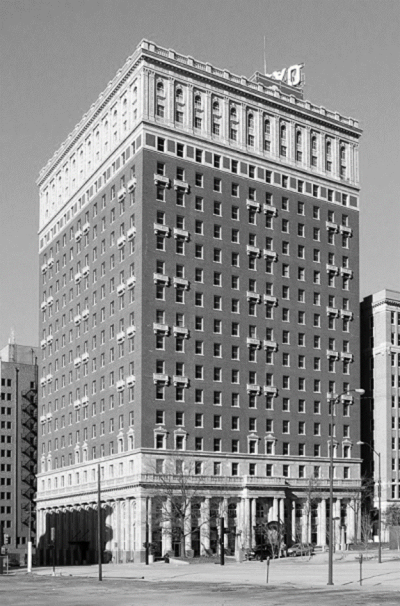
The Mayo Hotel, Tulsa Oklahoma
.
Joaquin Grill Orchestra, 1937 – 1938
…..I returned home to Sacramento from completing my summer band job at Cal-Vada Lodge at Lake Tahoe and was to receive a phone call that would send me into an unexpected direction. Roger “Buff” Clifford called me from Reno Tavern, a popular casino at that time. The orchestra had recently completed an engagement at San Francisco’s Fairmont Hotel and would be returning to the Fairmont after the Reno job. Buff said that Joaquin would like to have me in his band would I like to join him? I thought it over and discussed it with my mother and father if I should go; after all, I would only be gone for a short time and would be returning with the band to play at the Fairmont in San Francisco. At 20 years old I thought as long as I wanted to be a musician this would be a start.
…..In 1937 the big band era was on its way and the many aspiring your hopefuls that wanted to be a part of the future looked for a place to start. The young musicians that were influenced by what was happening in music looked for any opportunity that would help them attain their goal. There were many places that musicians just starting out could look forward to working. The ideal jobs at this time were to join a name band that played it all the major hotels in the country or get a job as a staff musician on a radio station orchestra. The ultimate job was to work as a musician in a Hollywood motion picture studio or a major symphony orchestra.
…..I called Buff and accepted the job. I will never forget when my mother and father took me to the Greyhound Bus station on 9th street in Sacramento for my trip to Reno to join the band. I can still see the tears. I would not see my parents, brother and sister for 20 months. I had already gone to Oakland and San Francisco to say goodbye to my aunts, uncles, and grandparents. I remember my grandfather in San Francisco picking a red rose from in front of his house to give me when he walked with me to the corner to catch the streetcar. He passed away two months later.
…..The 12 members of the Joaquin Grill Orchestra couldn’t have been a nicer group of musicians. All came from nice families from the Oakland/Alameda area. We were all in the same age group. In the many months that we were going to share together, there was no drinking, bad language, or womanizing. We enjoyed daily activities such as horseback riding, visiting historical places, the zoo, parks, and airfields to see the airplanes and picture taking.
…..The Grill Orchestra sounded pretty good. Joaquin was good looking, wore tails and led the band from the piano. During the night while we were playing we would hear the Amtrak train go by as it passed in front of the casino. The orchestra members and new friends were: saxophones, Bill Holman, Nick Battis, “Buff” Clifford; Fritz Newman, sax and violin; Jim Chanos, Joe Maita, trumpets; Carlo Borello, string bass and tuba; Elso Razzano; Mert Sass, drums; Joe Bruhl, piano and guitar; Joaquin Grill, piano. Al Green was the singer. Before the orchestra played the Fairmont Hotel in San Francisco it had successfully played at the Tahoe Tavern at Tahoe City and the Claremont Hotel in Berkeley.
…..The orchestra played a very danceable style of music that appealed to the society clientele at the time. Great tunes simply arranged with good tempos. We were booked under the management of M.C.A., the Music Corporation of America. It was their job to book the band wherever they could to keep it working and in places where the band would appeal to the clientele of the area. There were many places in America that bands were playing. Almost every major city nationwide had a band playing in a hotel and many had air time over the radio which helped to broadcast the music to the public and popularize it. It was important for a band to have a recognizable sound or hook so that when the band would broadcast the listener would like what they heard and the band would gain continued recognition. The bands of the time that had a strong identity were Guy Lombardo, Sammy Kaye, and so on.
…..Several nights after we finished playing at the Casino we went into Reno to watch the people gambling. Joaquin Grill seemed very lucky as he played roulette and was winning. One day when we were in Reno he asked me for a quarter. After I gave it to him he put it on the wheel of fortune spin and won $10. He took his winnings over to the roulette table and before you would know it he had several hundred dollars in front of him. He sent the money home to his mother via Western Union. To see people gambling and if they win it is tempting to do the same, however, after spending a summer at Cal-Vada Lodge with gambling all around me and not tempted to do so, I suppose I am just satisfied to only be an observer and to stick with a minimum of slot machines, however, our bandleader continued to win.
…..Several weeks went by playing each night at the club. One day Joaquin said that he just received a call from M.C.A. that they had just booked our band into the Mayo Hotel in Tulsa, Oklahoma. Of course, it was a surprise to me. After all I thought we were going back to the Fairmont Hotel in San Francisco. We were told that we wouldn’t be going back for a while. This was the beginning of a period of 20 months before returning home in the summer of 1939. We traveled to Tulsa in several automobiles and I rode with Fritz Neuman in his car. I remember talking most of the time while enjoying the scenery and points of interest as we went along. I think it all seemed exciting to me being my first time and on the road with a band. Fritz seemed more seasoned of travel that I was at the time and I was probably boring him with my continued excitement seeing different things as we went along.
…..When we arrived in Tulsa we all went our separate ways to find a place to rent while our band was engaged at the Mayo Hotel. Three of us decided to rent together to keep our expenses down. Carlo Borello, Buff Clifford and I decided to room together. We had a nice apartment and I remember the name of it being the “Alden Apartments.” Two rooms with a kitchenette rented for $40 a week and we split the cost three ways. Our paycheck was around $50 or $60 per week which was about average at that time. Some of the better known name band members were making $75 and if they were getting $100 for a week they really had it made. Buff was a close friend of mine for many years, having played together in bands big and small in Sacramento, and a strong feeling of mutual interests and respect for each other’s parents and families.
…..After we got settled in our apartment we went over to the hotel to look it over and to see the room where we would be playing. It was called the “Marine Room.” It looked very nice. I think it was October and November that we played the Mayo Hotel. Tulsa looked like a nice city and the downtown section looked modern with new buildings and clean streets. We had a remote broadcast over radio station KVOO nightly. We would go sightseeing on our free time and sometimes go back to the hotel during the day to practice individually if we wished to do so. I would od some cooking for the three of us in our apartment and remember one dish especially that I put together called a “quickie” if you didn’t have time for anything more exciting. Recipe: 1 can of Campbell Tomato Soup, I can of peas, and about 2 cups of elbow macaroni. Boil the pasta, heat the soup and peas and combine together. Enjoy with saltine crackers if you want to be fancy.
…..Carlo was really funny at times. At night when we were preparing to go to bed he would put on his usual sleeping attire, and old fashioned nightgown. This in itself was a sight to see, however, when he added a night cap on nis head and held a Hills Bros. Coffee can with his tilted back, it was hilarious. N Sunday morning I would usually go to the Catholic Church that was near our apartment. This I found a comfort being away from home for the first time and made me feel close to my family, although miles away. It was about this time that my grandfather, Giuseppe Maita, passed away in San Francisco and being so far from home to attend his service I went over to the church where I felt comforted.
…..One Sunday afternoon we, the members of the orchestra, were invited to spend the day at the beautiful estate of the Mayo family where they raised Belgium Draft Horses. It was out in the country where they had acres of land and a beautiful English style mansion. They had real cowboys working on the ranch and this was the day when they were going to increase the Draft Horse inventory by mating them. This was certainly an interesting experience for us.
…..The patrons that came to dance and dine at the hotel seemed to enjoy our music. They were well dressed. Tulsa was a wealthy community at that time with many oil wells in the area. Our booking agent, M.C.A. would try to keep all of their bands booked into stationary locations such as hotels and ballrooms with a minimum of one-night engagements. One night after one of our broadcasts, Joaquin was on the phone with our agent who made a suggestion that since we had a male vocalist, Al Green, why not hire a girl singer also? It was a popular trend at the time.
…..At the Mayo Hotel we worked six nights a week and had a night off. One of those nights of I heard about a popular place in Tulsa that had a band and as I didn’t have anything to do why not go over and hear the band. The place the band was playing in was like a ballroom with a lot of tables around the dance floor and hundreds of young boys and girls drinking what I thought looked like Coca Cola and dancing. They really looked like they were enjoying themselves.
…..The bandstand off to the end of the room and a fairly good local band playing popular tunes of the day. There were two girl singers sitting side by side on the bandstand that made a nice appearance. One of the girls got up from her hair and walked to the microphone to sing. She had a real spark and sang with a lot of confidence in her delivery. The other girl who turned out to be a sister got up and sang also. They both sang different from each other and made a nice appearance on the bandstand. I stayed a while longer to listen to listen and remembered that it was suggested to Joaquin that a girl singer would be a good addition to our band. I found out that the two girls were sisters and known as the Claire Sisters, Dorothy and Deborah Claire.
.
___
.
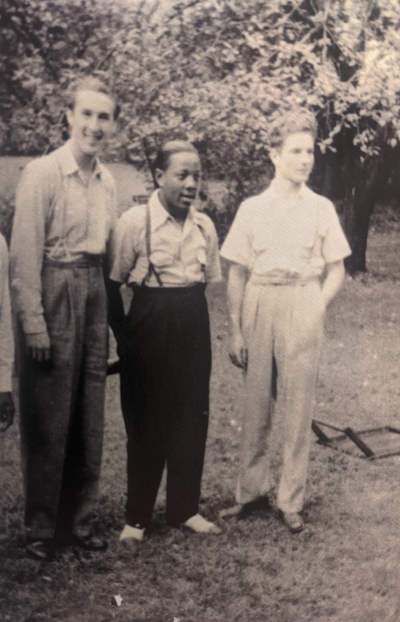
Joe Maita (right), with bandmember Lou Mitchell and Roy Eldridge, Pittsburgh, 1938
.
My experience with meeting and knowing the great trumpet player Roy Eldridge
…..Roy Eldridge was born on January 30, 1911 in Pittsburgh Pa. One of the most exciting trumpeters to emerge during the swing era, Roy Eldridge’s combative approach, strong musicianship were an inspiration and influence to the next musical generation, most notably Dizzy Gillespie. Although he sometimes pushed himself farther than he could go, Eldridge never played a dull solo.
…..Roy Eldridge started out playing trumpet and drums in carnival & circus bands. He would not discover Louis Armstrong for a few years. He worked with bands of Zack Whyte and Speed Webb in 1931. He worked with Elmer Snowden, who nicknamed him “Little Jazz” also McKinney’s Cotton Picker’s and most importantly Teddy Hill in 1935. Eldridge recorded solos with Hill backing Billie Holiday and with Fletcher Henderson including his 1936 hit, “Christopher Columbus” gained a great deal of attention.
…..In 1937 he appeared with his octet with his Brother Joe on Alto Sax at the Three Deuces Club in Chicago. His group recorded some outstanding selections as a leader, including: “Heckler’s Hop” & “Wabash Stomp”.
…..The Summer of 1938, I was playing with the Joaquin Grill Orchestra at the Willows at Oakmont Pa. on the Allegheny River. One night after we finished playing at 1:00 a.m. my friends, Louis Mitchell trpt. and Cliff Fishback our arranger and piano player, decided to go into Pittsburgh about 15 miles away to a Jazz Club . It was a place where some of the local jazz players would go to jam. It all would start late at night and could go on till the wee hours of the morning. We arrived around 1:45 a.m. and the place was nothing much to look at. We walked up a full flight of stairs and our ears told us that we arrived at the right place. It was jumping with some great sounds.
…..As we walked into the room where all the music was coming from, we couldn’t see a thing because the room was filled with cigarette smoke. As we looked around for a place to sit, the band started up again. It sounded fine, but when the trumpet player started up we realized that it was the great Eldridge. What a surprise. Roy was one of our favorite players and here we were in the same room with him.
…..Roy Eldridge and his Band had just finished a long engagement at the ‘Three Dueces’ a famous Jazz Club in Chicago. They had a lot of air time broadcasting from that spot and we would always try to hear him whenever we could get near a radio from where ever we would be. He was our favorite jazz player.
…..We found out that Pittsburgh was his home and that he actually was born there. It was our luck to walk in on this unexpected treat…. Of course when the music group took a break, we invited Roy over to our table and we had a great time meeting each other and discussing the music business in general…Roy introduced his brother, Joe Eldridge to us at this time. Joe was a fine alto sax man and also arranged music for some of the big bands. One band he arranged for was Bob Crosby and his Bob Cats, Bing’s brother, who had a fine band at the time. It was a happy night for all of us and it ended up with Roy inviting us to his house across the river to hear his band rehearse on the next day.
…..Of course Cliff, Lou and I went to hear the band rehearse at Eldredge’s home the next afternoon. His home was across the Allegheny River in an industrial area near the Heinz Ketchup factory…As we entered Roy’s house we could hear his band playing and it sounded great, even with the smell of ketchup in the air it was a memorable experience…The band sat around in a relaxed manner and without music stands played head arrangements. We enjoyed the day…
…..We invited Roy and his brother Joe to our home in Oakmont for a dinner that I would cook. Cliff, Lou and I rented this beautiful brick home for the summer while we were playing the music job at the Willows. I must say that renting this home was probably the best deal anyone could have. It so happened that this elegant home belonged to two elderly women that were going to Europe for the summer and as our engagement at the famous Willows was booked for the summer, we were able to rent this home…It was completely furnished with beautiful furniture in all the rooms on two floors and all the dishes, pots and pans, and silverware included for the unheard of sum of $90.00 per month (unbelievable even for 1938.) and linens too…We split the cost 4 ways, Cliff, Lou, myself and Joe Bruhl & wife Vera. As I remember, I think we took good care of the place.
…..Roy and Joe Eldridge came over for dinner the next afternoon. We enjoyed each others company talking about the music business in general…Roy told me that when he first started playing the trumpet he didn’t even have a trumpet lesson book, but he used his brother Joe’s clarinet music book to learn. We also took several pictures together with our cameras. I served an Italian dinner that everyone seemed to enjoy.
…..By 1939 Roy had a larger group playing at the Arcadia Ballroom in New York. With the decline of Bunny Berigan and the increasing predictability of Louis Armstrong, Roy Eldridge was arguably the top trumpet player in jazz during this era.
…..During 1941-1942, Eldridge sparked the GENE KRUPA ORCHESTRA recording a classic version of ‘Rockin Chair’ and ‘After you’ve gone’ and interacting with Anita O’Day on the great recording of “Let Me Off Uptown”.
…..It was about this time that the Gene Krupa Band was riding on a high as a bandleader, came to Sacramento, California. It was September of 1941 and Krupa’s Band with Anita and Roy were engaged to do a show at the California State Fair. By coincidence I was hired to play in the State Fair Concert Orchestra. It was 3 years since I had seen Roy and I was looking forward to see him again. After I finished my job that night, I went where the Gene Krupa Band was performing and after they finished their show I went backstage and there was ‘Little Jazz’. It was good to see him and we talked about going somewhere to visit. He introduced me to some of the musicians and the famous Anita O’Day. Meanwhile Roy said that the Band members were going downtown to the Senator Hotel where they were going to stay for the night, but because he was a black man he would not be able to stay with the rest of the band and would look around and see where to stay for the night. I said “Roy, you will stay with me.” I know that Roy remembered Lou Mitchell from our meeting in Pittsburgh and told him that I had a place in his family home with Lou’s mother, Mrs. Mitchell…Lou was working in the music studios of Hollywood at the time.
…..Roy said that would be great. We went home and after a good night’s rest I went upstairs to the main floor where Mrs. Mitchell would be in the kitchen and told her “Guess what Mrs. Mitchell? Roy Eldridge is downstairs in my room he stayed with me last night. Can you believe he is the star of the Gene Krupa Band and he couldn’t even stay at the hotel with the rest of the band because he is black?” Mrs. Kate Mitchell knew all about Roy Eldridge as she was aware of all the famous musicians at the time. Having two sons, Lou (trumpet) and Andy (trombone) she knew all about the existence of the music greats at the time: Ellington, the Dorsey Brothers , Goodman, Armstrong and so on…She asked me, “What do you think he would like for breakfast?” How about your scrambled eggs cooked in the great Mitchell Olive Oil and bacon would be good.
…..I went downstairs to get Roy and as we started up the stairs, which was on the out side of the house, there were some large Pyracantha shrubs full of orange berries. This was Roy’s first time in California and he looked at the little orange berries and said, ” Man! look at the baby oranges.” We had a nice breakfast with Mrs. Mitchell then took Roy to join the rest of
the band as they were to continue on to their next engagement.
…..The difficulties of a black musician traveling with a white band during a racist period hurt him as did some of the incidents that occurred during his stay with the Artie Shaw Orchestra 1944-1945, but the music during both stints was memorable. He toured with Jazz at the Philharmonic and a successful stay in France during the years 1950-1951. He recorded steadily for Norman Granz in the 1950’s. On Jazz at the Philharmonic he battled the famous trumpeters Charlie Shavers and Dizzy Gillespie and teamed up with Coleman Hawkins tenor sax great in a quintet. Roy Eldridge in the 1960’s put in a time with the Count Basie Band.
…..After my meeting with Eldridge in Sacramento in 1941 I didn’t see Roy until he came to San Francisco in the late 1960’s. He was Ella Fitzgerald’s conductor, manager, and trumpet star. They were in the Venetian Room of the Fairmont Hotel. I went over to see them and when Roy saw me he hugged me and told Ella about me and my putting him up for the night when he couldn’t get a room at the same hotel as the rest of the band.
…..It was just before showtime and Roy walked me across the dance floor to a single table in front of the bandstand to see Ella’s show. We know she is great. After her show she brought me her autographed picture, which I still have hanging up on my family room wall.
…..Roy continued on thru the 1970’s . Only a serious stroke in 1980 was able to halt his horn. Roy Eldridge recorded throughout his career for virtually every label. Roy passed away on February 26, 1989 at Valley Stream N.Y.
.
___
.
.
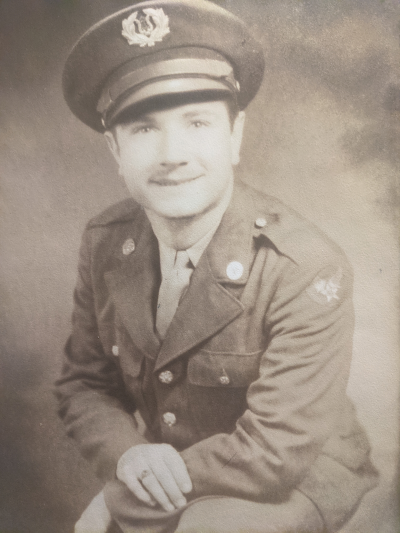
Joe Maita, c. 1942
.
December 7, 1941: The Day that Changed People’s Lives All Over the World
…..On Saturday night, December 6, 1941, I was leading my own ten-piece orchestra in the Empire Room of the Senator Hotel in Sacramento. It was a festive night for the dancers, unaware of what the next morning would bring.
…..I thought I was sitting on top of the world. Chosen over other orchestras competing for the same job as this would certainly be a springboard to the future. The Hotel Senator was a proven location for orchestras that had made the big time from there. Two orchestras that started at the Senator Hotel and became nationally accepted were Anson Weeks and Dick Jurgens. At this point of my engagement, I had already received several letters from hotels in the country acknowledging hearing our orchestra via radio and asking information as to the name of our booking agent. One hotel, the St. Anthony in San Antonio, was interested.
…..Sunday morning at the home of Mrs. Kate Mitchell, the mother of Louis Mitchell and Andy Mitchell, two of my lifetime friends who were working musicians in the Hollywood movie studios, rented a room to me. It was about 10 AM and I was taking a tub bath when Mrs. Mitchell, who was in the kitchen next to the bathroom, yelled out “Those damn J—‘s just bombed Pearl Harbor!” It certainly was a surprise attack.
…..I was scheduled to play a concert with the Sacramento Junior College Orchestra at 1:00 PM. Our soloist was a young Japanese soprano.
…..The declaration of war changed everyone’s life at this time. Many young men were either drafted or enlisted to serve the country. My last civilian activity as a bandleader was to musically accompany a group to entertain the service personnel at Mather Field Air Base. The performers were Bob Hope, Bing Crosby, and Babe Ruth.
…..April 17, 1942, I enlisted in the army with my good friend Ed Gorman, hoping that we could be together. However, Ed was sent to Texas and I to Camp Roberts with the Field Artillery. After three months of basic training on the 105 Howitzer cannon, I was transferred into the band attached only as it was already filled.
…..The months that followed were filled with many duties, activities and new friendships. We had daily schedules with the band and also participated in accompanying the stars that came to Camp Roberts to entertain the soldiers. I played viola in the orchestra that was used for this purpose. To name several stars that were famous at the time; Edward G. Robinson, Linda Darnel, and Red Skelton.
…..A lifetime friendship with Lino Acciaioli started at this time. Lino and I would play violin and viola duets and as he was the chaplain’s assistant, we could practice in the chapel when we wished.
…..There was a desire to form a string quartet. One day, out of 75,000 soldiers a cello player was found, however, he did not have a cello. The special services said that they have a cello that he could use. The day we were looking for came and as the four of us gathered to play, a cello was given to the cellist. As we sat in our chairs with anticipation and started to tune, the cello player places his bow on the string and a mouse ran out of the bottom of the cello! The mouse had apparently called it home.
…..I played trumpet in the Field Artillery Band each day and viola with the orchestra from the special occasions as they occurred.
…..Names of remembered friends during this time in my life are: Bill Iacolucci from Seattle; Joe Maita#1 (same name as mine) from Hayward, California; and Morris Shulick, an excellent violinist from Pittsburgh, Pennsylvania.
…..Joe Maita #1 and I met each other for the first time when I was transferred into the band. As far as we knew, we were not related. When we had a weekend pass we would hitchhike home.
…..His family in Hayward owned a grocery store, The N&M Market. They also had a small piece of land in the Hayward hills with several heads of cattle, which they had as a hobby. As the years went by their hobby became a huge business in buying and selling land and growing cattle in areas such as San Ramon and Alturas in Northern California. They also developed a feed lot in Elk Grove, California.
…..Several months had gone by. One morning I received orders to be shipped out, destination unknown. I left with my orders in hand, two barracks bags, one trumpet and one viola. My orders said that I was in charge of the troop movement. The troop movement turned out to be one soldier, Private Cherry. We were taken to the train station in the Camp and were on our way. We arrived at Indio, east of Palm Springs, at midnight. We were to wait for a truck to pick us up and take us to Camp Young. Three hours later a truck came to pick us up and drove 26 miles to the Camp which was the training area for desert warfare. We were left off in front of a building and told to go in and find a place to sleep. Later that morning I looked out and there I was in the middle of the desert with all the lines of tents and the noise from the tanks and half-tracks with cannons mounted on them going up and down the terrain. I reported to the officer in charge and asked where the band was. He said, “We have no band here.” What a blow it was. I was assigned to a tent with three other men. It was a lonely time for me having left my friends behind and wondering what was to be ahead for me. No one ever came to me to gie me instructions about what I was supposed to do. I remember the nights were very cold in October and as I slept on a canvas cot the cold came up from the bottom. In order to feel warmer I bought the Los Angeles Times and put it under me.
…..One day two soldiers came to me and said that they were buglers and since I had a trumpet, why not join them? As I still did not have an assignment as to what I was supposed to do at Camp Young, and in talking with my new bugler friends, I accepted their invitation to play taps. At 10 PM that night I took my trumpet, walked up the hill and looking down at many rows of seats, some of them glowing from candlelight, I played taps. It was a beautiful night on the desert with a moon and stars looking down on me. The trumpet tone sounded full and clear and was a thrill to me to hear it carry so far. It was an exhilarating experience for me.
…..The next morning I was told to report to headquarters. I faced two officers sitting behind their desks. I was asked, “Are you the person that played taps last night?” I said, “Yes sir!” “That is the way taps are supposed to sound, long and sad. As do not have a band we want you to take the other buglers out and help them on their bugles.” From then on, that was my assignment.
…..The days went by with a relaxed routine of two or three buglers and myself walking out into the desert to a nice quiet place away from the camp. We could blow our horns among the cactus plants. At 10 PM, I would go up the hill, blow taps and after I finished I had a routine to follow my nose to the camp kitchen where the aroma of fresh cooked donuts filled the air. I would take some back to share with my tentmates.
…..One day I decided to fill out an application to become a warrant officer. The papers would have to be sent to the 9th area headquarters in Salt Lake City first, then on to Camp Lee, Virginia, for approval. As time went by the papers were returned as it was too late to be in time for the next class and would have to wait another three months to apply again. As it was nearing the holiday season many soldiers had furloughs and passes to leave for the holiday, but many of us stayed behind. New Year’s Eve, 1942 was a night to remember. It was a lonely night for me as I sat in my tent thinking about family and the usual things. There were many sounds of good cheer and singing from some of the soldiers from another section of tents. A few of them came to my tent and invited me to join them and bring my horn. There were quite a group of them drinking and eating a variety of holiday foods. It was a nice, friendly group. I tried to play some tunes on my horn for them and one soldier asked me to play “Margie,” as that was his girl’s name. A little before midnight we started to walk up the hill to welcome in 1943. There was quite a group of us. On top of the hill with many of us gathered around I played “Auld Lang Seine” with everyone joining in. It was touching for all of us. A moment that will never be forgotten. I then followed with “Honeysuckle Rose.” Happy New Year, 1943.
…..One morning soon after our New Year gathering the mail orderly, who shared my tent with me, came in and said, “Joe, there is an order on the bulletin board that I just put up and I believe it applies to you.” I looked at it and it said, “If anyone has enlisted in a particular branch of the service and if you are not in the service you enlisted for, you could apply for an immediate transfer.” In a short time I was sent to Mather Field Band in Sacramento, where I was supposed to go in the first place.
.
___
.
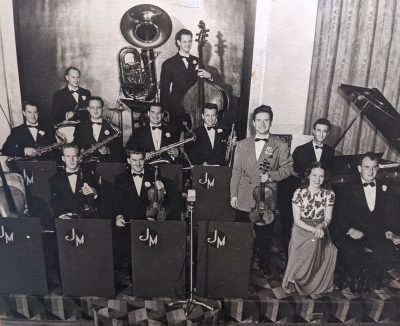
Joe Maita’s orchestra, Sacramento; c. 1936
.
.
.




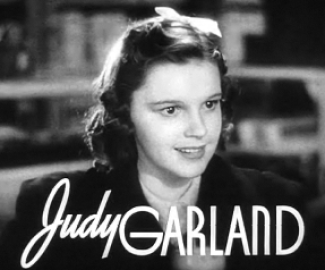



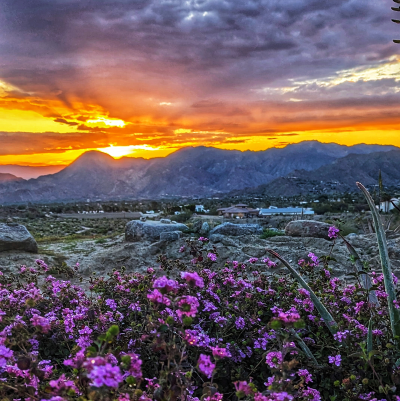

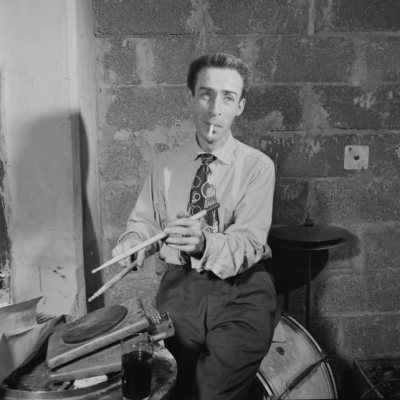


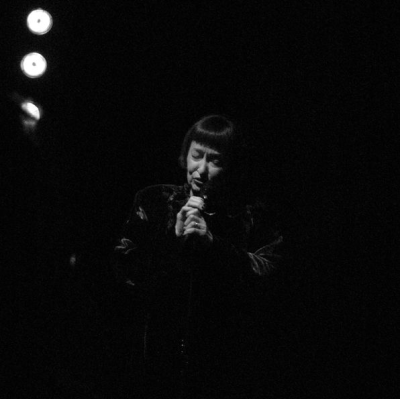

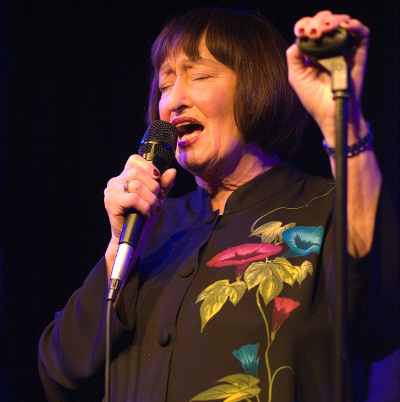


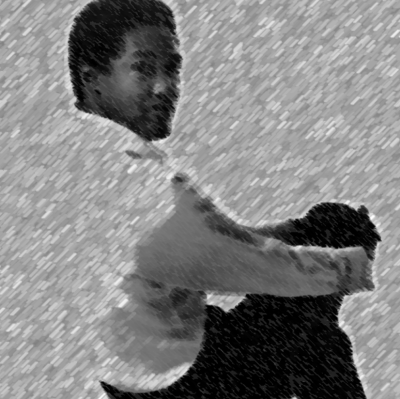

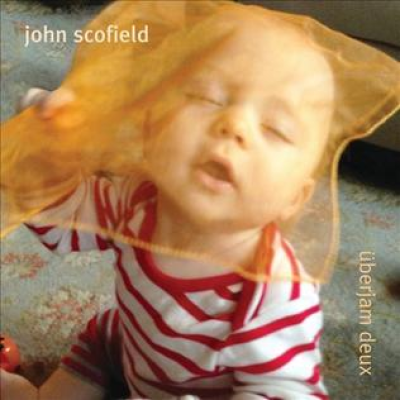
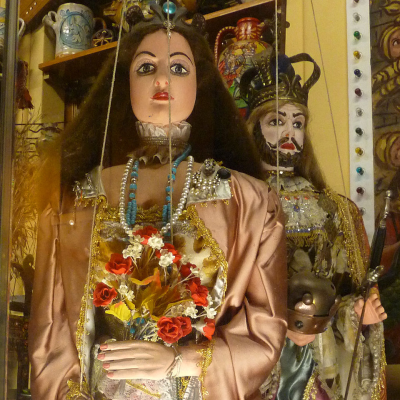




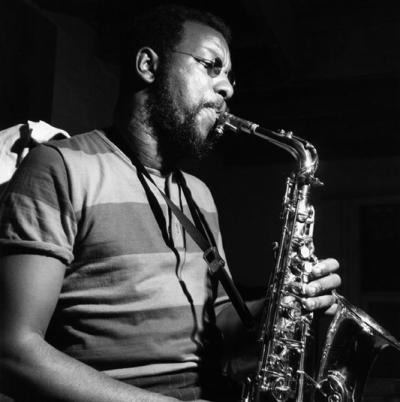

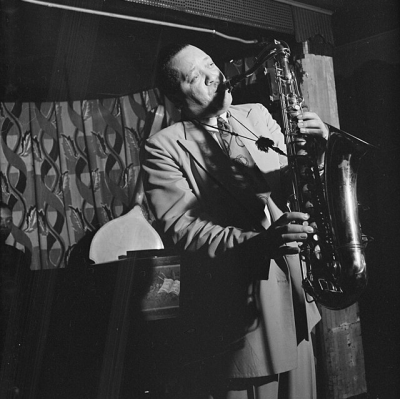




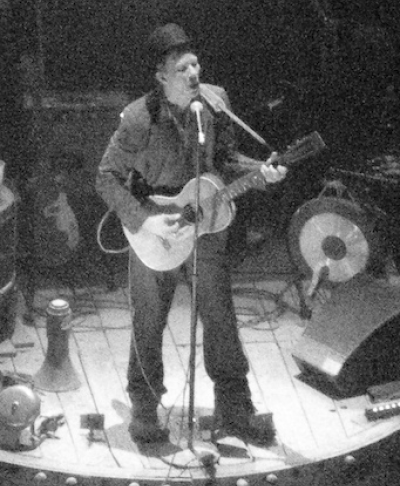









Today I was browsing and just stumbled across this memoir of your dad. I enjoyed reading about his encounters with Judy Garland, Roy Eldridge and Ella Fitzgerald…along with his recipes. Campbell Tomato Soup, canned peas, elbow macaroni and saltine crackers to make it fancy? Sounds good to me.
Your love for jazz, it looks like you came by it naturally. Your dad clearly was a very kind, endearing–and talented! — person. And without our memories…. where would we be? They are what help to uplift and sustain us, so thank you for sharing those of Joe Maita Sr.
Thanks, Connie. My dad was a wonderful person, and a terrific father. Not a day goes by without thoughts of my love and gratitude for him.
Joe, what a great job you are doing with your blog. Also, I was touched by your story about your father. I am writing an augmented biography about Conrad Gozzo, who, as you know, was a good friend of Lou Mitchell. Did your father know Gozzo as well? Lou loved Gozzo, but he also did your father. Suzanne Mitchell said that your father was a good cook and that she still has some of his recipes. Suzanne is on Facebook, under the name of Suzanne Mitchell Rose. Drop her a message.
Bob Strickland (Robert H. Strickland Music Groups on Facebook)